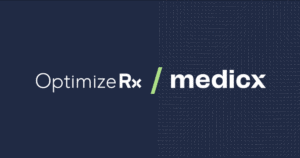With the threat of complete cookie deprecation looming over the digital marketing landscape, many brands are reconsidering their targeting strategy. Most if not all companies that rely on digital marketing today have primarily used third-party cookies to serve targeted ads to specific audiences of interest – and the life sciences industry is no exception.
As the demand for user privacy online has increased, common browsers like Safari, Microsoft Edge, and Firefox have implemented cookie-blocking by default. Google Chrome is poised to follow suit, although the timetable for that transition has been repeatedly delayed.
Whether cookies are completely defunct next month, next year, or even by the next decade, the slow phasing out has already given life sciences brands more than enough reason to look for another solution. Without the ability to track user activity and preferences across multiple sites, cookie-based targeting solutions will have little to offer digital marketers when it comes to executing effective programmatic campaigns.
Life sciences brands depend on the ability to serve highly focused ads to very niche audiences, whether marketing to patients, educating healthcare providers (HCPs), or a combination of the two.
Whether in-house or working at agencies, marketing teams supporting brands in healthcare and pharmaceuticals are looking for alternatives – but how can they know that they’re investing time and resources into technologies that will stand the test of time?
What Life Sciences Marketers Need to Make the Switch
Before life sciences marketers can commit to a new targeting technology, there are a number of non-negotiables that many teams will likely have on their checklist. Not only do marketers in this space need highly precise targeting and segmentation capabilities, but they also need the ability to track audiences and integrate data across multiple platforms and channels.
Marketing managers depend on having reliable, actionable insights to improve campaign and brand performance over time. That means any solution they turn to needs to simplify – not complicate – the wealth of marketing data they have to manage, without violating HIPAA regulations around data privacy and security.
Some have proposed moving to a first-party data approach or relying on other methods of third-party data tracking. Each of these strategies has similar problems: they’re difficult to scale and often lack precision when properly calibrated for patient privacy. Those qualities mean life sciences marketers will have a hard time maximizing the return on investment (ROI) of ad campaigns consistently with these targeting methods.
Shifting to an identity resolution approach can help many forward-looking organizations move on from outdated cookie-based marketing without having to accept the operational burden of first-party data management or the low fidelity of incomplete third-party data.
ID resolution involves combining digital identifiers to create a more valuable, unified consumer identity that can be used for targeting across channels, and it’s a promising solution. However, the most common variant of this solution – probabilistic ID resolution – is not sufficiently robust for the life sciences industry.
Why Deterministic Identity Resolution Is the Way Forward
ID resolution generally falls into two categories that deliver very different results:
- Probabilistic modeling.
- Deterministic matching.
Probabilistic modeling, while the most common, lacks the competitive edge life sciences marketing teams need to consistently target and reach patients and HCPs of interest. In this approach, marketers rely on lookalike audiences, built with characteristics that give them a high probability of corresponding with target audiences.
The problem with this approach is that lookalike modeling can easily result in low-fidelity matching, especially when lookalikes are based on skewed or unreliable population characteristics.
Using probabilistic ID resolution makes it difficult to control advertising costs while increasing ROI because you may not even be serving ads to the right audience. The low campaign exposure match rates that often result from this approach make it even more difficult to optimize campaigns over time, as you have less visibility into how your intended audience would react when encountering your ads.
On the other hand, deterministic matching removes the guesswork, connecting identifiers from known, trusted information about your target audience to create identifiers for targeting. In life sciences, much of that data would come in the form of records of diagnoses, prescriptions, and treatments in medical claims data.
In the probabilistic approach, marketers look to medical claims data as a way to profile target audiences but not as a way to target them. Life sciences brands need to be incredibly careful when handling patient data and marketing to consumers – any system or approach that risks patient re-identification is not a viable option.
So why should brands and agencies consider deterministic ID resolution as the next evolution of their targeting approach? Well, privacy-safe, deterministic targeting is possible when you combine decentralized data ownership and multi-party data linking.
Let’s explore how it works and why it will put you ahead of the competition.
Why Doesn’t Everyone Use Deterministic ID Resolution?
To optimize and then scale their advertising activities without sacrificing ROI, life sciences brands need a way to achieve precise targeting and high audience quality – without sacrificing patient privacy. That’s a difficult bill to fit, especially with the depth of detail required to build and reach niche segments of brand-eligible patients and HCPs.
There’s good reason why virtually all segmentation and targeting technologies that use ID resolution focus on a probabilistic approach. Without the right capabilities or approach, deterministic matching would be very time-consuming and resource-intensive to independently execute at scale, as companies would need to gather and obtain consent to use masses of medical and consumer data.
Additionally, it would be difficult to ensure privacy and HIPAA compliance while exchanging and matching the first- and third-party data needed to build precise patient and provider audiences.
To overcome these challenges, Medicx developed an advanced ID resolution approach that uses hashed identifiers to facilitate multi-party data linking, connecting – but not sharing – medical claims data from multiple Safe Harbor partners to a vast warehouse of consumer preference data.
Medicx’s Approach to Deterministic ID Resolution
Unlike other commonly used identifiers that rely on volumes of aggregated consumer data, our ID resolution solution, MX#, leverages medical and prescription claims to improve audience quality. This patented technology creates unique identifiers at the household level, which are then aggregated among over 35 million hyperlocal areas in our Micro-Neighborhood® targeting platform.
As a result, users can adapt to a cookieless world, equipped with a solution that helps them achieve better audience match rates and higher ad ROI, all while remaining in compliance.
How Medicx ID Resolution Works in Practice
Our approach to ID Resolution enables consistent consumer identities across media, devices, and other touchpoints, aggregated at a geographical level that is:
- Narrow enough to ensure precision for media execution to measurement.
- Designed to deliver audience quality at scale.
- Regulated in a way that maintains patient privacy.
These identities seamlessly link the wealth of data life sciences brands need to reach niche audiences, allowing marketers to leverage secure insights that they can trust from media exposure to consumer behavior to patient insights.
Frequently Asked Questions
Here are answers to some of the most common questions we hear about MX# and the MIcro-Neighborhood platform.
How are consumer identities matched to the hyperlocal areas in the Micro-Neighborhood platform?
We process over seven trillion data points per week to understand where consumers are located, as well as what devices they’re using. Analyzing IP addresses, device IDs, and consumer behavior allows our platform to reliably distinguish household members from visitors over time.
How does Medicx protect against patient re-identification with hyperlocal targeting?
When serving ads using this platform, the cohorts used for targeting are never small enough to risk patient reidentification so target audience segments maintain patient privacy. Built-in controls on the Micro-Neighborhood platform ensure a minimum number of brand-eligible patients (i.e., those that meet the criteria of interest input) are present with the nine-digital zip code that defines each hyperlocal area.
Does MX# improve audience quality and reach compared to cookie-based targeting?
Campaigns that rely on third-party cookies often see match rates at less than 60%. In contrast, MX# resolves 94% of impressions, giving marketers much more confidence in the performance and future optimization of their campaigns.
Additionally, MX# expands reach and fidelity to the approximately 85% of online consumers using iOS devices and Safari or Firefox browsers that are currently untrackable with third-party cookies.
How do Safe Harbor partners handle or share data with Medicx?
Our approach to ID resolution maintains patient privacy by ensuring that no single entity has all the pieces of the puzzle. Data linked between Safe Harbor partners is never shared between partners or with Medicx, and we partner with Datavant to ensure that we only connect tokenized records to other, anonymous tokenized records.
We also rely on independent third parties to have experts certify our process for the lowest possible risk of patient re-identification each year.
How does MX# support integrated omnichannel marketing?
Medicx IDs can be used to target both consumers and HCPs across a variety of media, and devices, improving targeting across channels such as digital, digital audience, connected TV, display, and video. The improved reach and solution that MX# offers for brand-eligible patients, including those with rare conditions or highly specific profiles, provides the opportunity for enhanced performance measurement, audience quality, script lift analysis, and ROI confidence.
What Can Your Team Achieve with Medicx Health?
High levels of competition in the space and time in market can make or break brand performance. That’s why it’s critical for life sciences marketers to know exactly who they’re targeting, whether they’re seeing the right ads, what actions they’re taking, and how to improve the next activation or interaction.
With MX# and the Micro-Neighborhood targeting platform, brands and agencies can:
- Turn campaign measurement into meaningful insights for ongoing optimization.
- Refine consumer media execution based on geographic trends.
- Tailor HCP media execution to increase ROI and support sales teams.
With our cookieless solution, we’ve nearly doubled the pool of brand-eligible patients available for targeting and measurement. As a result, you’ll have more confidence in your results and the ability to make more strategic decisions to increase brand performance. And we’re ready to show you exactly how well deterministic ID resolution works – contact us to see a customized proof of concept.



